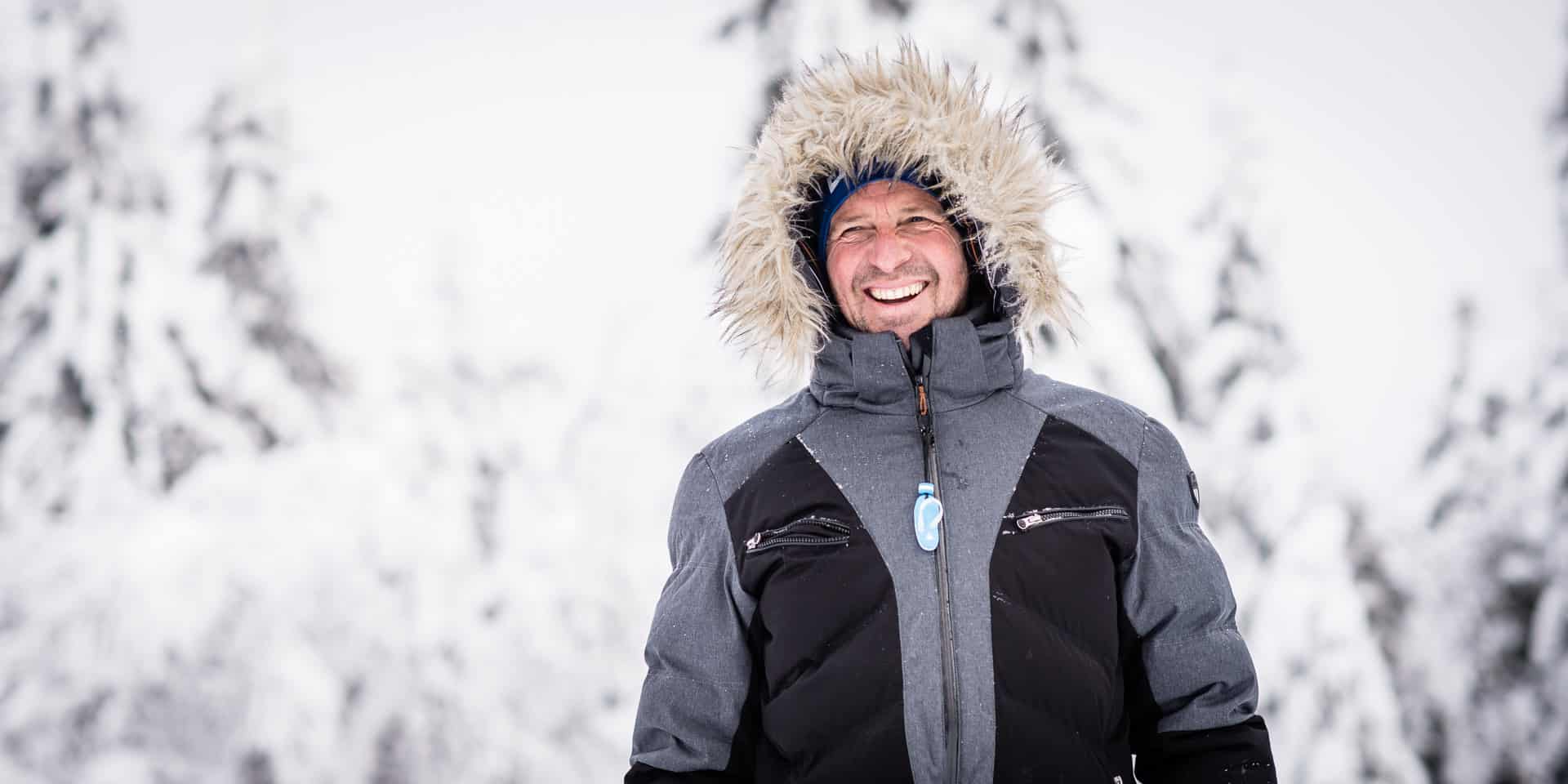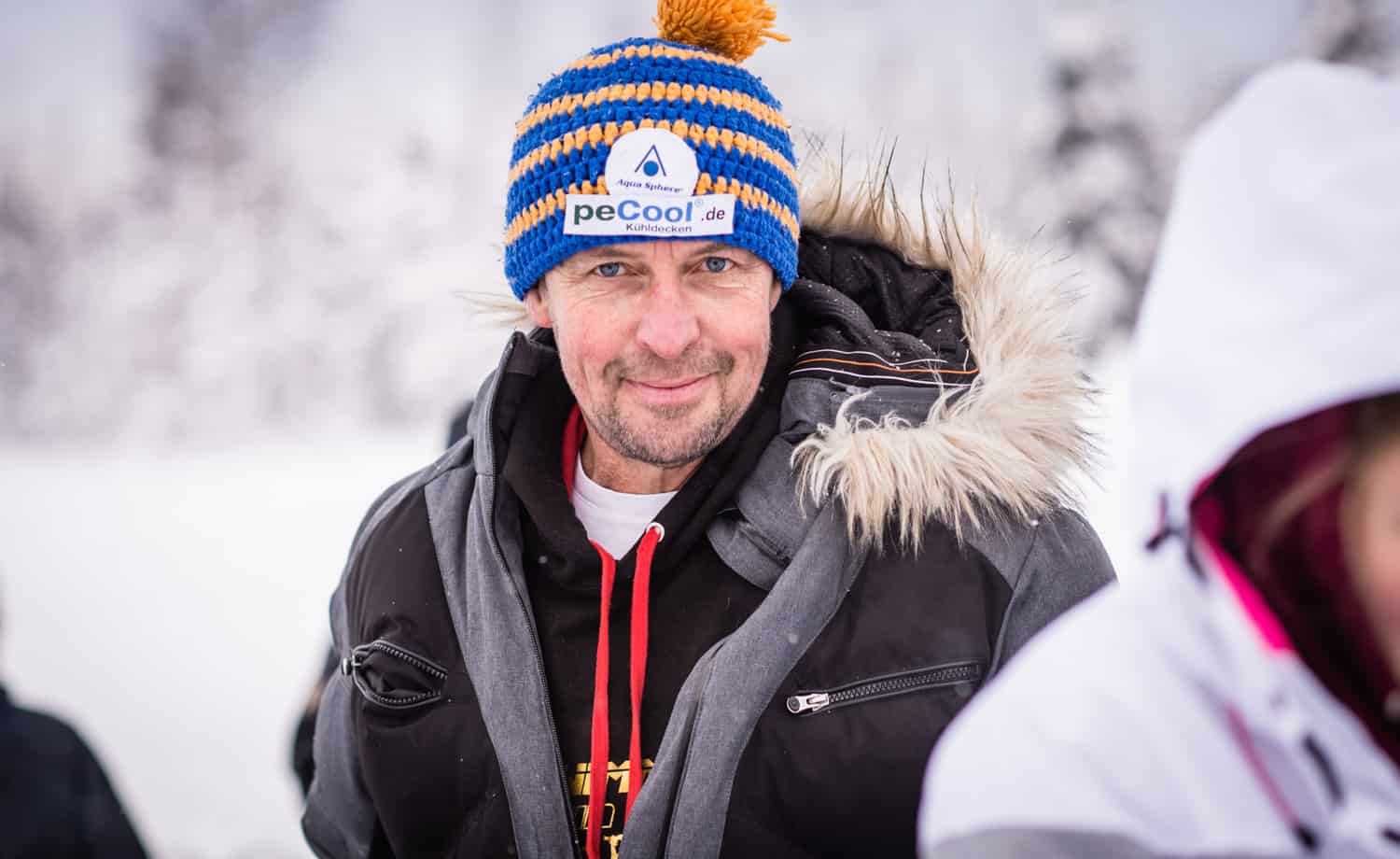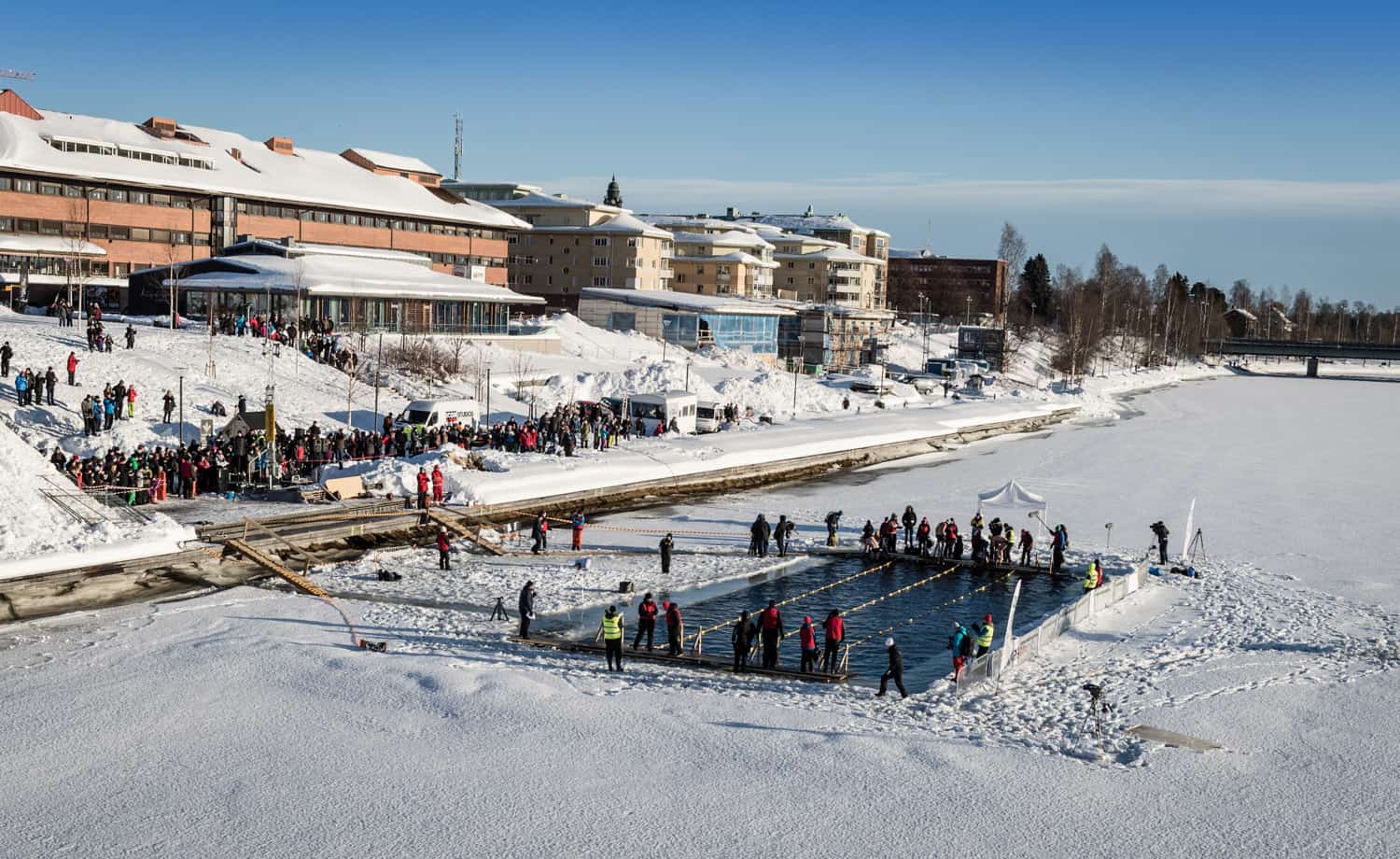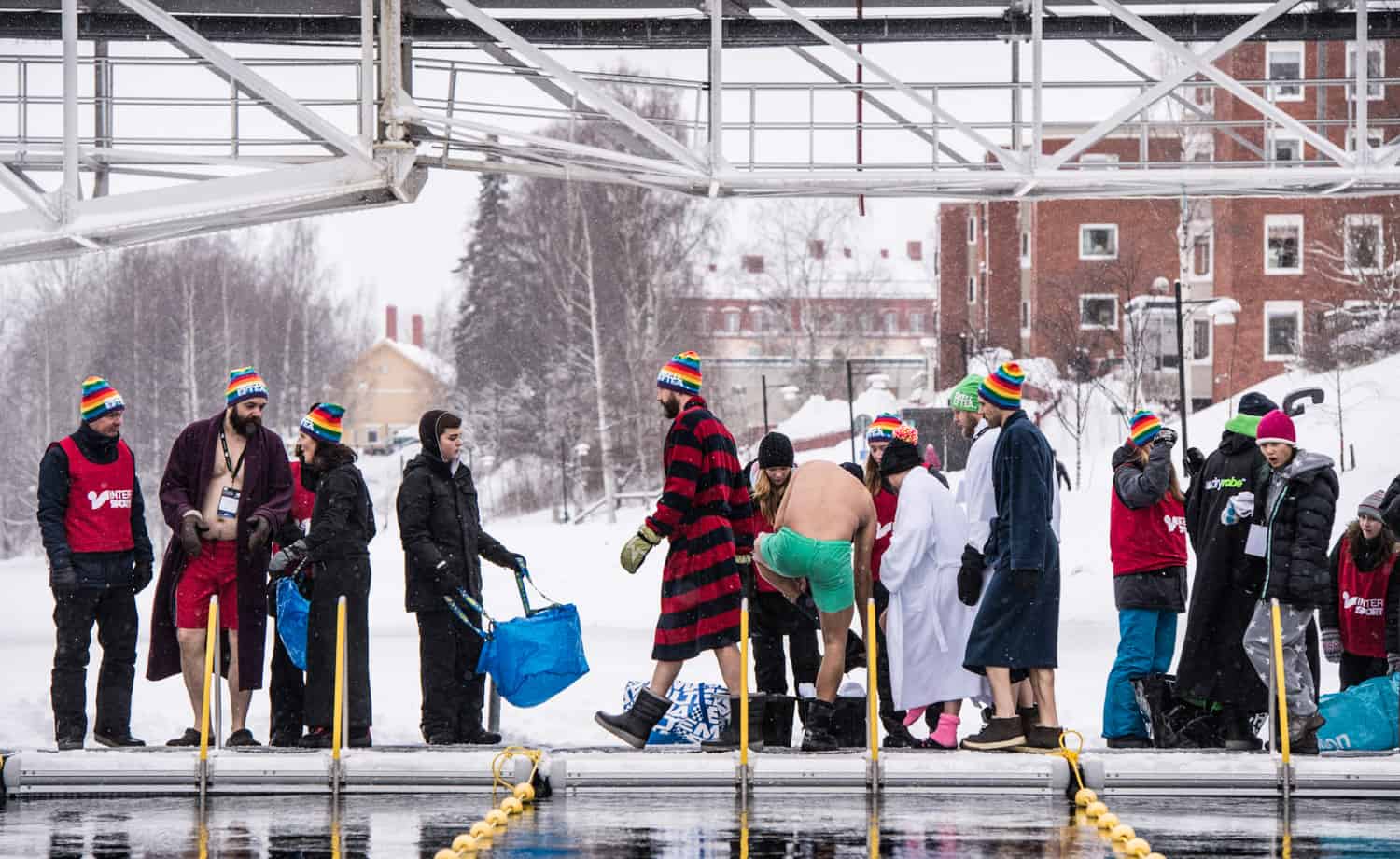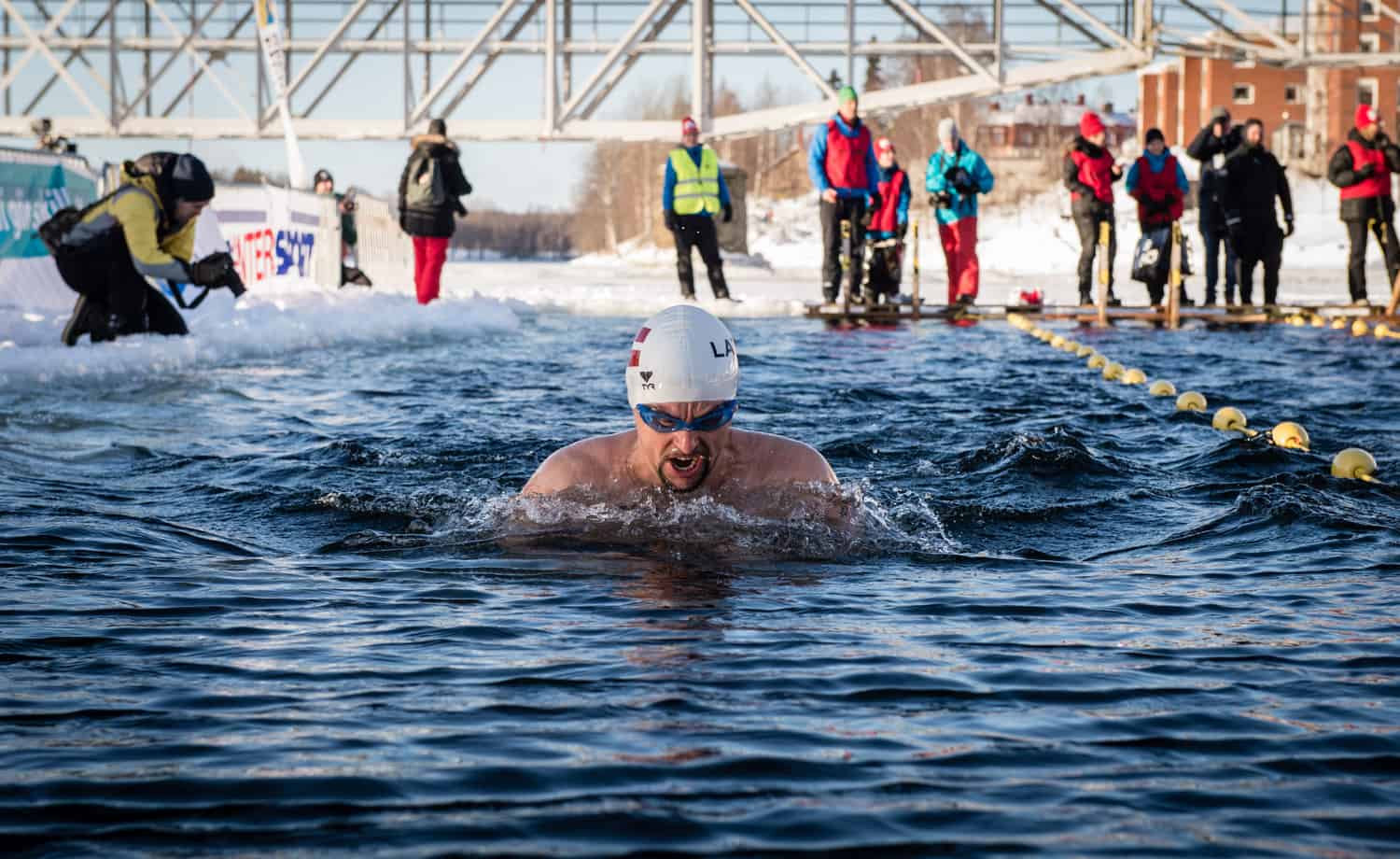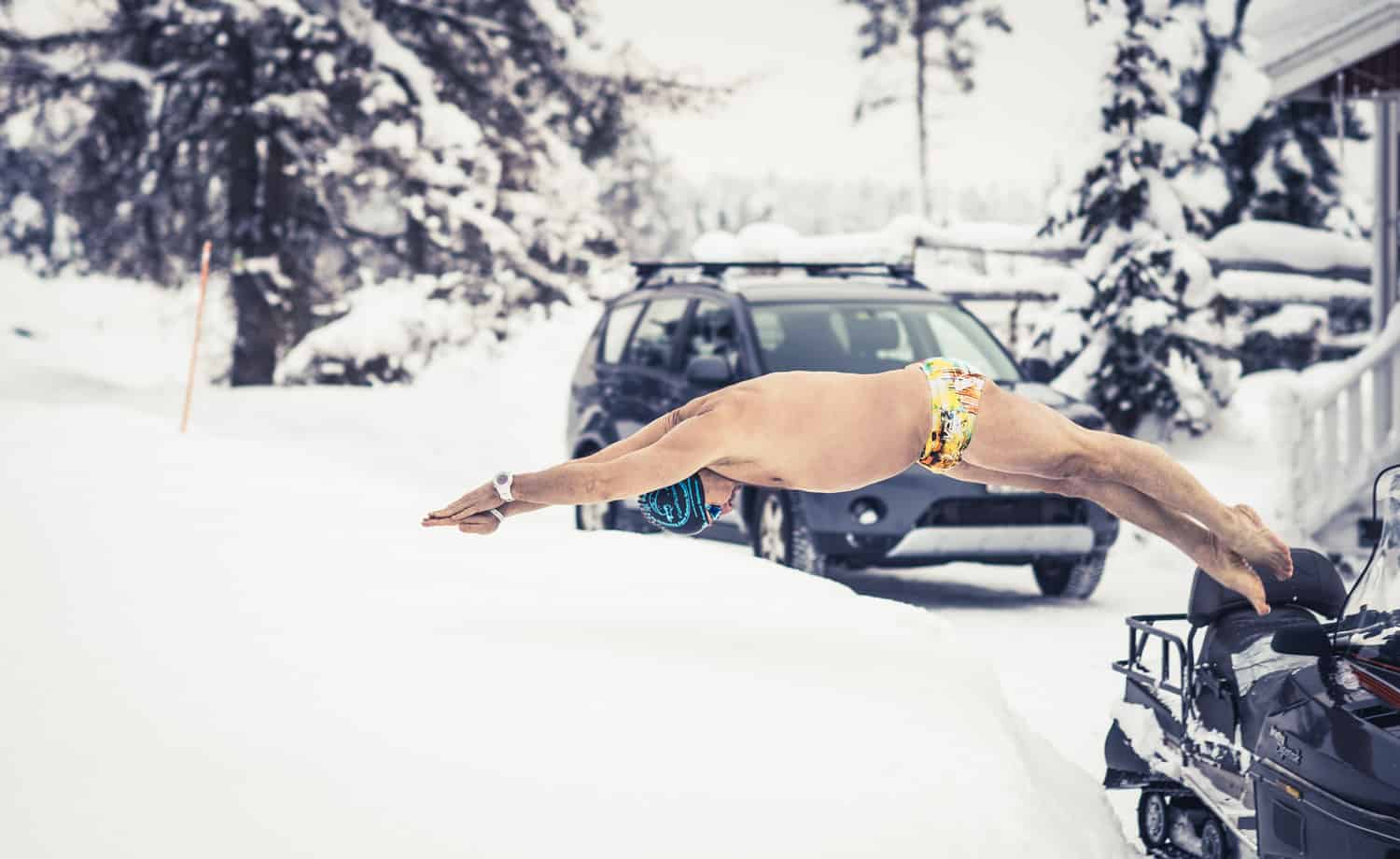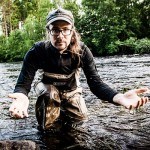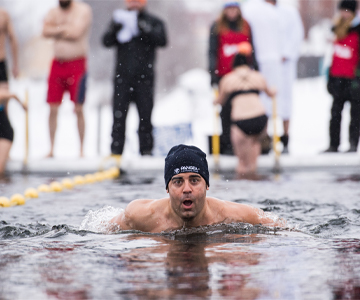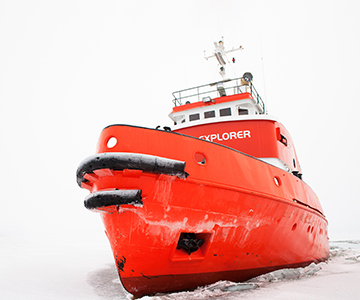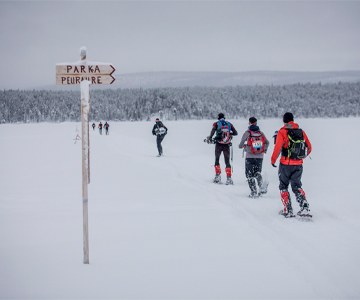When extreme swimmer Christof Wandratsch became the first person to cross lake Boden and broke the world record across the English channel, he found himself looking for new challenges. He found winter swimming and the rest, as they say, is history.
German Christof Wandratsch, born in 1966, is an extreme swimmer and international long-distance star. Amongst other things, he was the first to cross Lake Boden, Germany’s largest lake. Swimming the 64 kilometres took him 20 hours. In 2007 he crossed the English Channel faster than anyone else at just over seven hours, the same year he also broke the Gibraltar Strait world record and in 2016 he broke his own record for 1000 m winter swimming. Well, you get the picture. He has swum all over the world, more than anything else he likes long, and in recent years also cold, swims.














